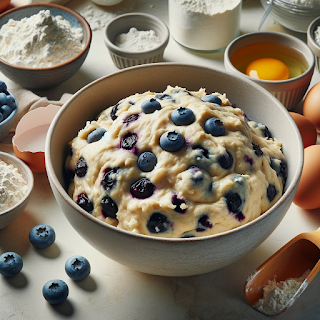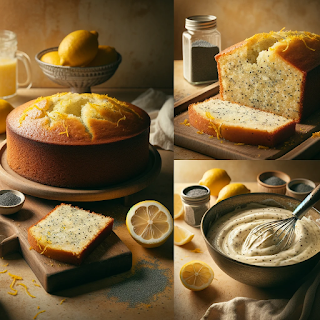Origin Story: Umm Ali
Umm Ali is a beloved Middle Eastern dessert, often referred to as the Egyptian version of bread pudding. Rich, creamy, and sweet, this comforting dish has a fascinating history that dates back to medieval times, combining elements of cultural significance and personal nostalgia.
Historical Roots
The origins of Umm Ali can be traced back to Egypt during the Ayyubid dynasty in the 12th century. The name "Umm Ali" translates to "Mother of Ali" and is linked to a legend involving the wife of the sultan. According to the tale, the dish was created to celebrate a victory and was made by combining leftover bread with milk, sugar, and nuts.
The traditional preparation of Umm Ali involves layering pieces of puff pastry or bread with a mixture of nuts, raisins, and coconut, and then soaking everything in a sweetened milk mixture before baking. This method results in a luscious, creamy dessert with a golden, crispy top.
Cultural Significance
Umm Ali is more than just a dessert; it is a symbol of hospitality and celebration in many Middle Eastern countries. It is often served during festive occasions such as Ramadan, Eid, and family gatherings. The dish's ability to bring people together around a shared table enhances its cultural importance, making it a beloved part of many celebrations.
The simplicity and versatility of Umm Ali make it a favorite among home cooks. It can be easily adapted to include various ingredients based on personal preference, such as different types of nuts, dried fruits, or flavorings like rose or orange blossom water.
Personal Connection
My introduction to Umm Ali happened during a family trip to Cairo. I vividly remember the first time I tasted this dessert at a local restaurant. The combination of textures—from the creamy, custard-like base to the crunchy top—was unlike anything I had ever experienced. The flavors were rich and comforting, a perfect balance of sweetness and warmth.
Inspired by this experience, I decided to recreate Umm Ali in my own kitchen. The key was to achieve the right balance of ingredients to replicate the authentic flavor and texture. I experimented with different types of bread and pastry, various combinations of nuts and fruits, and adjusted the sweetness to suit my taste.
Recipe Evolution
Creating the perfect Umm Ali involved fine-tuning several elements. I found that using a combination of puff pastry and croissants provided the best texture, combining flakiness with a soft, absorbent interior. The mixture of nuts and dried fruits had to be generous but balanced, ensuring each bite offered a variety of flavors and textures.
The milk mixture, often flavored with a touch of vanilla or rose water, needed to be rich and creamy. I discovered that using a blend of whole milk and heavy cream gave the dessert a luxurious texture. Baking the dish until the top was golden and slightly crispy was essential to achieving the perfect contrast with the creamy interior.
Sharing the Tradition
Today, Umm Ali is a staple in my household, especially during festive occasions. It’s the dessert I make when I want to bring a touch of Middle Eastern warmth and hospitality to the table. Each serving of Umm Ali is a reminder of the rich cultural heritage and the joy of sharing food with loved ones.
Ingredients
Instructions
🍥Preparation:
- Preheat your oven to 180°C (350°F).
- Place the puff pastry sheet on a baking tray and bake according to the package instructions until golden and crispy.
- Once baked, allow it to cool slightly and then break it into bite-sized pieces.
- Prepare the Milk Mixture:In a large saucepan, heat the milk, heavy cream, and sugar over medium heat.
- Stir until the sugar is completely dissolved.
- Add the vanilla extract, ground cinnamon, and ground cardamom. Mix well.
🍥Assemble the Dessert:
- In a large baking dish, layer the puff pastry pieces.
- Sprinkle the mixed nuts, raisins, and shredded coconut over the puff pastry.
- Pour the hot milk mixture evenly over the top.
- Drizzle the melted butter over the mixture.
- Place the baking dish in the preheated oven and bake for about 20-25 minutes, or until the top is golden and bubbly.
- Remove from the oven and let it cool slightly before serving.
Pro Tips:
- Using Day-Old Bread: If puff pastry is unavailable, you can use day-old croissants or other types of bread for a similar texture.
- Nuts and Add-Ins: Feel free to customize the nuts and dried fruits according to your preference. Apricots, dates, or figs can add a unique twist.
Secret Tips:
- Extra Richness: For an even richer dessert, replace some of the whole milk with evaporated milk or condensed milk.
- Infusion: Infuse the milk with a cinnamon stick and cardamom pods for a deeper flavor before straining them out.
Serving Options:
Health Benefits:
- Nuts: Rich in healthy fats, protein, and essential nutrients.
- Milk: A good source of calcium and vitamin D.
Variations & Customization Options:
- Chocolate Umm Ali: Add a handful of chocolate chips or a drizzle of chocolate sauce for a delightful twist.
- Rose Water Flavor: Add a few drops of rose water to the milk mixture for a fragrant and traditional Middle Eastern flavor.




